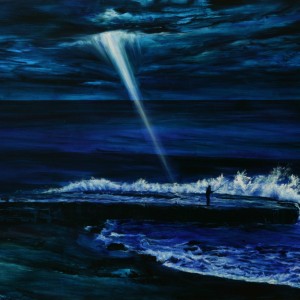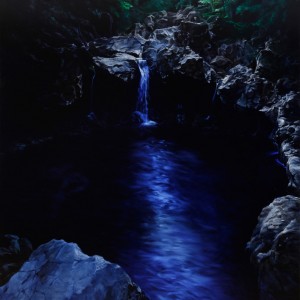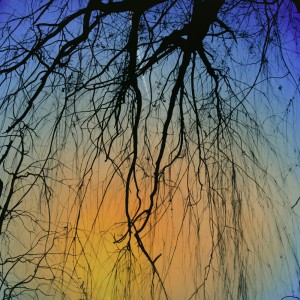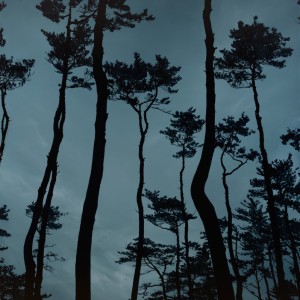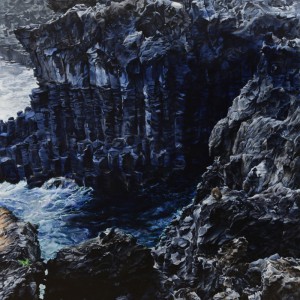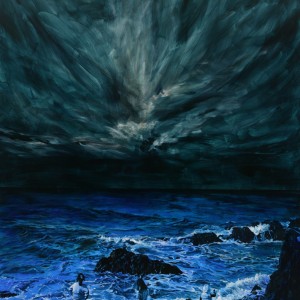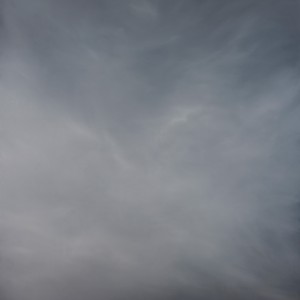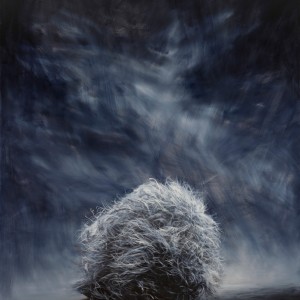Kong Sung-Hun
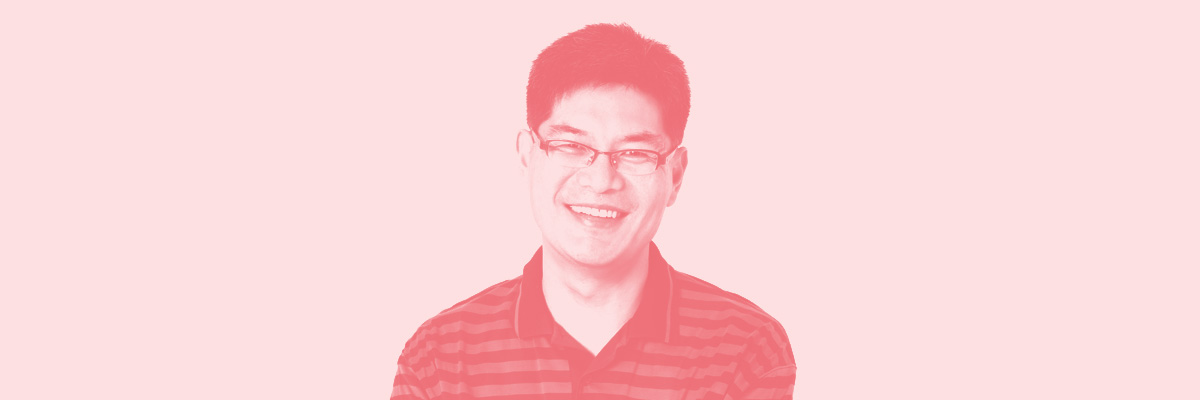
Interview
CV
2014
Wind, and Ocean, Arario Gallery, Cheonan, KR
In the Scene, Shinsegae Gallery, Incheon, Busan KR
2012
Sea, OCI Museum, Seoul, KR
2011
Just Couldn’t Say, Ggul, Seoul, KR
2010
Winter Travel, Shinsegae Gallery, Seoul, KR
2009
Kong, Sung-Hun, Arirang Gallery, Busan, KR
Winter Landscape, ArtForum NewGate, Seoul, KR
2008
Neighboring Nature, Alternative Space Pool, Seoul, KR
2007
Suburbs, Leisure, ArtForum NewGate, Seoul, KR
2005
A Night at Byukje, ArtForum NewGate, Seoul, KR
<Two-Person Exhibitions>
2012
Kong, Sung-Hun and Kim, Seong-Ryoung, Moon & Park Gallery, Busan, KR
2009
Ryu, Yong-Moon and Kong, Sung-Hun, TJH Gallery, Seoul, KR
2008
High Light-The Message of Light: Kong Sung-Hun, Han Young-Ho, UNC Gallery, Seoul, KR
2002
Not So Smooth: Midori Mitamura x Sung-Hun Kong, Shiseido Gallery, Tokyo, JP
1991
Installation by Two Artists, Kwanhoon Gallery, Seoul, KR
<Selected Group Exhibitions>
2013
Aesthetic Category, Woomin Art Center, Chungju, KR
2012
Korean Painting Now, National Taiwan Museum of Fine Arts, Taichung, TW
This is K-Pop Art, Sejong Center for the Performing Arts, Seoul, KR
(Im)Possible Landscape, Plateau, Seoul, KR
The 2nd IPAP: Sea of Peace, Incheon Art Platform, Incheon, KR
Playground, Arko Art Center, Seoul, KR
Jindo-Sori, Shinsegae Gallery, Seoul & Gwangju, KR
Diagnostic Mind 1: Catastrophe, Dongdaemun Design Plaza Event Hall, Seoul, KR
2011 Seoul, City Exploration, Seoul Museum of Art, Seoul, KR
Rhetoric of the Images, Seoul Museum of Art, Seoul, KR
Sea of Peace, Incheon Art Platform, Incheon, KR
Busan, Familiar but Strange, Shinsegae Gallery, Busan, KR
The Room of Meditation, OCI Museum, Seoul, KR
The Spectrum of Contemporary Korean Art, Kaohsiung Museum of Fine Arts, TW
2010
30th Anniversary of the Young Korean Artists, National Museum of Modern and Contemporary Art, Gwacheon, KR
Inter-View, Incheon Art Platform, Incheon, KR
Made in Popland, National Museum of Modern and Contemporary Art, Gwacheon, KR
21 & Their Times, Kumho Museum, Seoul, KR
Korean Avant-garde Drawing, SOMA Museum of Art, Seoul, KR
2009
Jiri Mountain, Shinsegae Gallery, Gwangju & Busan, KR
My Way, My Works, Vit Gallery, Seoul, KR
Blue Dot Asia 2009, Seoul Arts Center, Seoul, KR
Peppermint Candy, National Museum of Modern and Contemporary Art, Gwacheon, KR
2008
Pre Yangpyeong Eco Art Festival 2008, MANAS Art Center, Yangpyeong, KR
Contemporary Kaleidoscope: Art in Korea Today, Central House of Artist, Moscow, RU
A Trio in Late Autumn, ArtForum NewGate, Seoul, KR
Ancient Futures, NamSeoul Annex Building of Seoul Museum of Art, Seoul, KR
2007
Contemporary Art from Korea: Peppermint Candy, Santiago Modern Art Museum, CL & The National Museum of Fine Arts, AR
Giants of Illusion, Sejong Center, Seoul, KR
FAST BREAK, PKM Gallery Beijing, Beijing, CN
2006 Juan Media Festival, Juan Station Square, Incheon, KR
2005
Night View: from Sunset to Sunrise, Ansan Culture and Arts Center, Ansan & Daegu Culture and Arts Center, Daegu, KR
Blue, Gana Art Center, Seoul, KR
The Seoul Art Exhibition 2005-Painting, Seoul Museum of Art, Seoul, KR
The Window toward 21st Century: Incheon Art, Incheon Multiculture & Arts Center, Incheon, KR
<Collections>
Gyeonggi Museum of Modern Art, KR
National Museum of Modern and Contemporary Art, KR
National Museum of Modern and Contemporary Art, Art Bank, KR
Seoul Museum of Art, KR
KINTEX, KR
OCI Museum, KR
Critic
Sung-Hun Kong:
The Symbiotic Tension between Reality and Art
Kim Jeongrak (Professor, Korea National Open University)
Realism is much more than a term referring to a certain style of literature or art; it is also an attitude or sentiment for approaching things in the real world, including oneself. Therefore, the concept of realism in the humanities must be differentiated from its physical, scientific application. Just as the rise of Realism in 19th-century art was presaged by the scientific philosophy of Ludwig Feuerbach and Auguste Comte, realism evolved in conjunction with the development of the social sciences. In essence, realism represented a new scholarly attitude that derived from the objectivity of the physical sciences. Gustave Courbet, one of the representative Realist painters of the 19th century, defined himself as both a realist and a socialist. His brand of Realism involved seeking the absolute truth of nature through the experience of real phenomena. But from the humanities perspective, realism can be viewed in a different way. Of course, the realism of the humanities must be founded on materialism, critical investigation, and objective facts, but it must also account for people’s response to facts, in terms of their psychology, emotion, and sensitivity. Rather than simply identifying facts, the realism of the humanities can only be consummated by meditation and contemplation of facts. With this in mind, the realism of Sung-Hun Kong is nearing its fulfillment. Whether he is working on installations, videos, or traditional paintings, Kong views realism as a life raft that connects reality and art.
Kong’s efforts to reflect reality in his works are not simply an act of mimesis, but a type of ‘meta-mimesis’ that extends beyond existing concepts. The mere creation of visual or surface similarity is not his focus; instead, his works call into question the very act of mimesis itself. His art represents a kind of simulacra, a concept that defines contemporary society and visual culture, but he strives to reveal simulacra in the same way that simulacra reveal contemporary society and visual culture. Kong fabricates stylized contemporary landscapes that critically represent the artificiality of today’s society by highlighting art as artificiality. At the heart of this process are the covert messages that he embeds in the paintings, in order to signal that artificiality does not arise solely from the method of production, but can be equally associated with the consumption of art.
1. Artificiality as the Essence of Art?
From early on, western art philosophy directly associated art and technology: “ars” in Latin, as well as “techne” in Greek. In this context, art is oppositional to nature. Art was the condition of being inspired to imitate nature, as well as the product of that condition. Thus, according to the tradition of Plato and Aristotle, art is paradoxically non-creative. But by the early days of the modern period, art—particularly visual art, i.e. paintings and sculptures—was placed on a pedestal as “ars liberalis”. Then in the 18th century, Charles Abbe Batteux defined the term “fine art”, helping to re-establish art as a creative act and paving the way for the “genius” artists who performed such creative acts. As time has passed, however, this definition has been widely disputed. At the same time, due to the pursuit of purity in fine art, or “art for art’s sake”, art has largely lost its basis in craftsmanship and elements of production.
This shift away from the skills of production might be interpreted to mean that art has lost its essence of processing or reproducing nature. In reality, however, it simply means that new methods of processing are being employed, marking a return to art’s essential status as technology. Science and technology have expanded and developed by borrowing aspects once associated with art, and in turn, art has appropriated various elements of technology. Indeed, the art world of today, dominated by video art, media art, and installations, would not be possible without advanced technology. Although Kong was educated in the fine arts, he has never restricted himself to traditional methods. After graduating from the Department of Painting in the College of Fine Arts at Seoul National University in 1987, he began following the path of technology, rather than art. He transferred to the Department of Electrical Engineering at the same school, where he learned about technology that had been abandoned by art. Recalling his time in art school, he said, “When I remember myself at art school, I felt like I was always walking on air, like 30 centimeters above the ground. After graduation, I felt vain. I didn’t know where my footing was as I tried to become a painter. So I wanted to start all over again, but this time starting my art from a very concrete and distinct foundation. I knew that I needed more than the vapor of the air in order to do fine art, which is the only art that deals directly with materials.” In engineering school, he acquired the technical knowledge that was not available in art school. At the same time, he began focusing on idealism, not simply in the name of purity, but as an empirical and critical attitude guiding his practice. While this attitude can be seen in his video and kinetic installations based on technology, it is even more active in his paintings.
Contemporary art has been largely defined by the aspiration to overcome the limitations of art as mere mimesis. Various efforts in this direction have led to the establishment of diverse new genres, movements, and styles, but more profoundly, they have shaped modernity as a time unlike any other in the past. Kong seems to have spent his 20s reflecting on this irrefutable truth, and his reflections can be seen in his continuous artistic experimentations and exhibitions. The causes of those reflections might help to illuminate the reasoning for his unusual career path. First of all, in the 1980s, Korean art was floundering in a dispute between the formal binaries of figurative vs. abstract art. In the simple formal order, art was a tool for producing sensual beauty under the false name of “purity”, but according to Kong, a better term for it was “flatness.” And for him, the opposite of this “flatness” was “reality.”
The abnormal development of abstract painting was a historical fact for Korean contemporary art. Korean abstract art had not only become de-politicized, it had entered a realm of such intensive idealism as to be completely cut off from reality. Extremely abstract paintings, exemplified by Korean Monochrome paintings, became simply decorations that had lost the essential spirit of Korean art. What’s more, these decorations were highly praised in abstract, erudite language that was incomprehensible to any ordinary person. Art was left with only color, form, and material. It became a thing inside a white cube, existing only to be praised with unfathomable words and sold for unrealistic prices. As art became more systematized, it not only took over the form of modernism, it annihilated the previous ideas of modernism that it had once actively embraced. By then, art had completely lost touch with life, i.e. reality.
At the other end of the spectrum was Minjung art (People’s art), which arose as a critical response to the de-politicized abstract art. Minjung art condemned the formalism and elitism of institutionalized art, and actively criticized contemporary society as a whole. Accordingly, it remained outside the art system, and took realism as its existential foundation. At that time, Korean society was repressed by anti-communism and the industrialist ideology of the military dictatorship, so artists were afforded very little space for their creative thoughts. Thus, in Korea, Minjung art represented the first artistic attempt to resist the reality defined by the reproduction of virtually identical thoughts and products. Of course, most Minjung artists were educated within the art system, and their art was not completely innovative. It was basically an extension of the advanced style of “Social Realism”, in that it actively embraced the proletariat culture and promoted the passionate participation in social reality. In other ways, Minjung art can be associated with the ideals and methods of Pop Art or Realistic Expressionism. For a while, Minjung art seemed to provide a possible way to overcome the limitations of existing Korean art, but in the end, it could only expose its own limitations. Kong was attending art school in the midst of the grand debate between institutionalized art, which had the backing of academia, and Minjung art, which supposedly represented the will of the common people. For Kong, neither movement provided a satisfactory outlet for his creative drive, so he basically hovered somewhere beyond the boundaries of the two. Forced to look elsewhere for the key to opening reality, he turned to technology.
2. Installations and Videos: Machines That Have Lost Their Practical Function
One of the most unique developments in contemporary art since the mid-20th century has been the rise of installation art, which is basically an advanced form of the traditional genre of three-dimensional sculpture. However, installation art transcends the basic representational aspect of sculpture, i.e. sculpture’s independent existence as a created artifact, by placing greater emphasis on the relationship and context that exists between the work and the audience. Art installations are characterized by infusing a seemingly neutral real space with artistic meaning through the construction or arrangement of impermanent structures. Furthermore, installation art simultaneously reflects the theatricality of performance art and “happenings”, along with the redefinition of space inherent to Land art and Environment art.
For Kong, installations represent the universal value of reconstructing the world he perceived and experienced. On the other hand, through installations, an artist can strategically manipulate the presence of objects and concepts from the systems of industrialization and civilization, thereby granting them an entirely new meaning. For example, in his installation Blind Work, Kong removed window blinds, a contemporary update of curtains, from their intended usage, and formally converted them into a completely different signifier. But what new meanings does he hope to achieve through such processes? First of all, Blind Work can be classified as Kinetic art, because there is movement generated by electricity. But that movement is not just physical, because it is augmented by optical illusion, which would seem to place this installation within the realm of Optical art. But it also functions somewhat like a mobile, which is an object used to embody fundamental movement or time. From this perspective, Blind Work represents the successive development of contemporary sculpture during the 1960s and 70s. But for him, this work emerged from his contemplation of the (sub)consciousness of contemporary people, who have utterly adapted themselves to life in a mechanical environment.
In this case, Kong chose to use window blinds, but he could just as easily have opted for fluorescent lights or kitchen utensils. However, blinds seem to be an appropriate choice, since they can either block or permit the passage of light, and because they can easily go from being flat (two-dimensional) to vertical (three-dimensional). For Blind Work, he painted one side of the blinds with different colors of fluorescent paint, creating a veritable spectrum, and then covered the backs with aluminum tape for a reflective effect. He then rigged the entire structure to an electrical motor so that the blinds incessantly flip and shift. The mechanical movement causes a constant flicker of reflected light and color that basically overrides any possible literate or theoretical interpretation, effectively filling the vacuum of meaning with an attitude of “instant” gratification. His machine works are conglomerates of contemporary art influences, integrating Daniel Buren’s meaningless lines, Victor Vasarely’s optical illusions, and Alexander Calder’s drifting movement. Perhaps these works may be seen as final projects for Kong’s own independent study on contemporary art.
He separates concepts from their universal definition and context, and then arbitrarily decomposes and re-assembles them to form a new system of meaning. Along with his mechanical installations, he also created a series of “useless” installations or happenings, such as Art is Expensive: Getting Admission Fee, in which he analyzes the logic of the work through a flow chart, thereby exposing the mechanisms of art consumption. Artwork Vending Machine, an installation consisting of an electronic display board and vending machine, represents his cynical response to a society and system that define works of art as luxury goods. In these electrical installations, Kong was able to apply some of the technological expertise he acquired in engineering school to attack the fallacy of art and art discourse, and rearrange the elements and principles of contemporary art. From a technical point of view, the machines themselves are quite impressive, but even more notable is the switch of semantic values that occurs when Kong manipulates the intended function of the machines.
Kong’s machines recall the ideas of Gilles Deleuze, who theorized that machines are not independent entities with a fixed nature, but rather constituents of a relationship that can only be defined by their role within that relationship. When a machine becomes an artwork, it loses its original function, and its relationship is fundamentally transformed. So, are Kong’s machines artworks? To cite Kant, an artwork is a material that exists in a pure condition defined by its own purpose, rather than the intentions of others. Kong’s installations would seem to meet this definition, but in addition to their ostensible artistic purpose, they convey another more critical message about the world he experiences. But at the same time, his installations do not function in a straightforward critical way, by using high-tech gadgetry to symbolize capitalist ideology. His messages are more manifold and metaphorical, so that his works expertly communicate in a language that is multi-vocal. Machines can be a tool for making rhetoric and meaning more elaborate, but they can also become their own language. Kong plays with the “words” of his rhetorical compositions in a carefree, almost comedic style, reminiscent of Ludwig Wittgenstein. But he is not satisfied playing such games merely on the conceptual level. Through his happenings and installations, he extended his games to the experimental stage, but they would be realized even more powerfully in his paintings.
3. To Paint or Address the World
In order to fully appreciate Kong’s paintings, you must stare at them deeply for a long time, because there are many details that initially go unnoticed. Of course, the same might be said of almost any artist, but it is especially true in Kong’s case. Reality is reduced to a condition of vision, but our vision gets tied up trying to determine whether his scenes are real or artificial. At first glance, his paintings look like photos, so our vision initially tells us that we are looking at a scene produced by a digital camera. Over time, however, with careful examination, we can begin to see his painterly acts throughout the surface of his works. Other levels of reality emerge, as we discern the process of imitating nature, as well as the action and intention of the artist. Kong himself observes scenes and objects with deep precision, and he forces us to do the same through his works.
One of the primary concerns of 19th-century Romantic paintings was to challenge the sublime. At that time, the magnificence of nature was regarded with a pantheistic religious awe. Landscapes of nature never seemed to offer any solid footing for human inhabitants, and thus were more representative of a transcendental existence than any physical location. With artists such as Caspar David Friedrich, landscape paintings, which had once been considered a mere background for history and humanity, attained the level of religious works. This trend can be elucidated by the circumstances of the time, particularly advancements in natural science and the spread of the industrial revolution throughout Europe. Suddenly nature became regarded primarily as a resource for human industry, and was thus subject to exploration and development. But the Romantic landscapes served as an antithesis to such ideas by depicting nature as divinity, as an independent, unapproachable entity. Now, more than 200 years later, nature seems to be in dire need of human protection, even as it repeatedly emasculates human reason and resistance by unleashing its destructive power through terrifying natural disasters. When such catastrophes occur, people inevitably proclaim the magnificent and celestial power of nature. But within days or even hours, life gets back to normal, and such thoughts are forgotten as we resume our steady consumption of nature.
Despite being created under completely different circumstances, Kong’s landscape paintings are quite similar to Friedrich’s in terms of composition and sentiment. But while Friedrich portrays nature as transcendental and sublime, Kong’s version of nature is artificial, as is any sense of the sublime that emerges from the paintings. In his series of works with the theme A Night in Byukje, which he has presented in several different exhibitions, Kong presents an environment that has been manipulated for human convenience and comfort. In this regard, the differences between the two painters become more vivid. While Friedrich found his landscapes by scouring the harsh, desolate mountain ranges of Silesia or the shores of the North Sea, Kong simply had to look out his window or wander around his own neighborhood. But both Friedrich and Kong can create images of a lake, valley, ocean, or sky that impart the utter solitude and isolation that is the inevitable condition of every human being. The landscapes of both Friedrich and Kong hint at the existence of an absolute that cares nothing for our highest hopes and expectations. But while Friedrich adopts a religious attitude in attempting to capture the divine manifestation of nature, Kong seeks to contrast nature’s indefinite movements with the myopic views of industrialism and capitalism. Kong’s rhetoric becomes evident in the numerous artificial elements to be found in his paintings. In fact, in Kong’s works, nature seems to be emerging from artificial settings, rather than vice versa. For example, the paintings in his exhibition Neighborhood Nature stir our anxiety by showing elements of nature that appear to be quietly biding their time amidst human construction, as if they were conspirators in some divine plot. The people occupying his landscapes are typically engaging in the most banal daily activities, like eating, drinking, and relieving themselves. Despite the overall sense of unease, the people are very nonchalant, as if they were mechanical entities immersed in an artificial environment of their own creation.
Kong has an amazing capacity for exaggerating certain aspects of ordinary settings to create scenes that are highly amplified and agitated. This creates an interesting duality, as the somewhat callous attitude conveyed by the mundane setting is eventually overpowered by a cynicism that controls the entire painting. What’s more, this emotional structure is the exact rhetoric that he is trying to convey. The paintings from the series A Night in Byukje appear ugly, dismal, grotesque, and above all else, ironic. This attitude is very different from the simple sentiments expressed by artists who aspire to pure realism. But this cynicism is not merely Kong’s rhetoric; it is the very essence of the reality that he experiences and represents. By his adding his own brand of factuality to existent scenes or facts, he produces a deformed structure wherein reality becomes surreal and fantastical.
4. To Create Dystopia
Every political ideology dreams of its own utopia. But like Thomas More’s imaginary island, a utopia is an imaginary place that can never exist. But that will never stop people from trying to enact the conditions for a utopia. In fact, contemporary Korean history is filled with such misguided attempts. After being devoured by chaotic events, Korea became possessed by a psychopathological conviction to construct an artificial utopia. But rather than being the main subjects of this utopia, the Korean people were used as the machinery to build it. An entire nation of individuals was reduced to pure labor, as 99% of the Korean population diligently worked, ate, breathed, and reproduced solely to achieve the goals set by and for the elite 1% who ruled the society. In order to resolve and relieve their desires, they constructed the most artificial natural environment, which Kong came to regard through the concept of “neighborhood nature.”
“Neighborhood” can mean the area in the vicinity of a place or thing, but it also suggests a psychological closeness that goes beyond physical distance or proximity. Similarly, “neighborhood nature” can refer to elements of nature that are artificially implanted in an urban zone, but it also means the compulsion to create such areas. In general, “neighborhood nature” means a local park built in order to improve the health, happiness, and recreational lives of people living near one another, or people living within a certain area that comprises a district. Here, more concepts emerge—such as “local residents” or “neighborhood district”—that were born around the time when human life and the environment began to be systematized. These ideas have the power to categorize and redefine reality as a tool or objective truth, and such power is deeply rooted in the human unconscious.
But “neighborhood nature”, as an amalgam of nature and desire, is often a veneer to conceal humanity’s relentless capitalist and mammonist drives. Kong exposes this pretense through his own particular brand of realism. Somehow, from the most ordinary scenes—a motel, a local festival, a tourist spot, an empty lot awaiting development, an artificial lake—he is able to divulge the political aspects of contemporary society. But the relationship between his images and reality is not merely notional or conceptual, nor is his political commentary overt. He has an innate sense of the ethics of realism, which involves not only staying true to reality, but also avoiding any attempt to imply or force a judgment. Still, his paintings have a critical and seditious edge, in that they reveal the dystopic aspects of a supposed utopia, unlike the politicians or real estate developers who routinely attempt to do the opposite. His video and conceptual works are perhaps even more overt in their defiance, and such political dissent places Kong in the margins.
5. Beyond Realism…
Throughout the 20th century, artists experimented with various ways of representing reality. Even those styles that are not explicitly defined as realism can still be easily associated with realism in numerous ways. Any form of art that aimed to remove itself from reality or realism was relegated to mere decoration, an artistic parlor game. But for Kong, “realism” is more than just an aesthetic axiom; it is something fundamental, like Kant’s categorical imperative. He views the form of realism as one of various methods he can employ to convey his message. Thus, realism functions as his manual for communicating through art.
Can a fact be expressed in words? Or can language contain truth? Kong has clearly spent time contemplating such questions, and his works provide many answers. While some of those answers seem almost improvised, as if transmitting his reflex response to a situation, others are more refined, and are clearly the result of prolonged thought and revision. One clue to his feelings can be found in the titles of his works. For an artist, choosing titles for works can be a very interesting process. Before the rise of postmodernism, the trend was for contemporary artists to title their works with serial numbers or the main color or compositional feature. This practice reflects the tendency to delve deeply into the formalism of a concept, which came about after the musical concept of the “opus” was incorporated into visual art by Malevich and Kandinsky. Of course, such titles reflect the ideal of anonymity that is inherent to modernism, where individuals are merely constituents of an overlying structure. In such case, rather than a name, one’s identity is better designated with a resident registration number, military service number, class year, telephone number, address etc. Of course, collective groups have been known to provide their members with names in order to convey an illusory sort of individuality. But for Kong, titles are an important signifier of an artwork’s meaning. He uses his titles to mark his paintings as individualized, singular entities, as something unique. For example, as we ponder the odd image of noodles placed in a doghouse in his Globalization and Nationalism, the title hints at the contemplative distance that bridges concept and reality.
Nothing is as it seems to be, even facts or so-called “reality”. Every aspect of reality comes to us distorted by our senses, organized by our language, and adjusted by our politics. Kong plays with these and other concepts in his paintings, thereby reverting the reality we have defined with our language back to the true reality, by relying solely on the existing power of language. A title can never serve to define the reality or actuality delivered by an artwork, but it may cast doubt upon it, or at least reactivate our thought process. Rather than serving as a definitive conclusion, Kong’s works furnish more clues and opportunities to investigate that which we had previously thought was a conclusion.
6. Fragmented Conclusion
There are two reasons why this conclusion is “Fragmented”. First, it is my admission that my summary has not done justice to Kong’s art. Second, it is because his works are strategically fragmented in order to set up an artistic progression to connect past, present, and future.
Of course, every artist can create diverse or consistent works according to their own will and capacity. The formation and development of an artistic direction and style belongs to an artist’s own independent domain, so it is an inviolable area that cannot be breached by others. Kong’s works are unquestionably diverse, in terms of genre alone. He has created installations, videos, performances that have left the audience somewhat perplexed, and also organized happenings in which he altered a concept in some very literal way. But in the end, for this exhibition, he chose to feature his paintings, which might be viewed as traditional. Of course, his current interest in painting may not be final, and I would not be surprised to see him trying something new in the future. I do not wish to give the impression that I am openly in favor of artists arbitrarily working in different genres or instigating randomness, because of some post-modern inclination. But I do think that the best way to conclude this article is to simply arrange some fragments, rather than attempting to contain Kong’s art within fixed categories.
If I were to toss out a few possible interpretations of Kong’s art, I would have to begin with his works’ relation to reality. But rather than a reality formed by pure representation, he addresses a twisted, distorted reality, that is further modified by his own cynical attitude. Maybe it could be called a “virtual reality”, a term that he has used as a title for one of his works. In any case, his reality represents a different system of factuality from the one most of us live in. Therefore, in this postmodern 21st century, his somewhat traditional-looking paintings are better classified as alternative, rather than retro.
Second, this alternative can be viewed in relation to a few concepts that address contemporary society, such as the “body without organs” or Deleuze’s machines. Third, Kong’s art recalls a prevailing theme of postmodernism, perhaps best expressed by Jean Baudrillard in Simulacra and Simulation: “Disneyland is presented as imaginary in order to make us believe that the rest is real, whereas all of Los Angeles and the America that surrounds it are no longer real, but belong to the hyperreal order and to the order of simulation.” Similarly, Kong uses an artificial art to depict the artificial landscapes and circumstances of contemporary society. Kong’s innovative working method enacts a dual mode and logic, through which he uses his artistic imagination to maneuver reality in such a way as to allow us to process the surreal elements embedded therein. But the surreal-ness of Kong’s art is not some conceptual spectre floating above reality, because he incessantly applies that surreal-ness to address reality.

